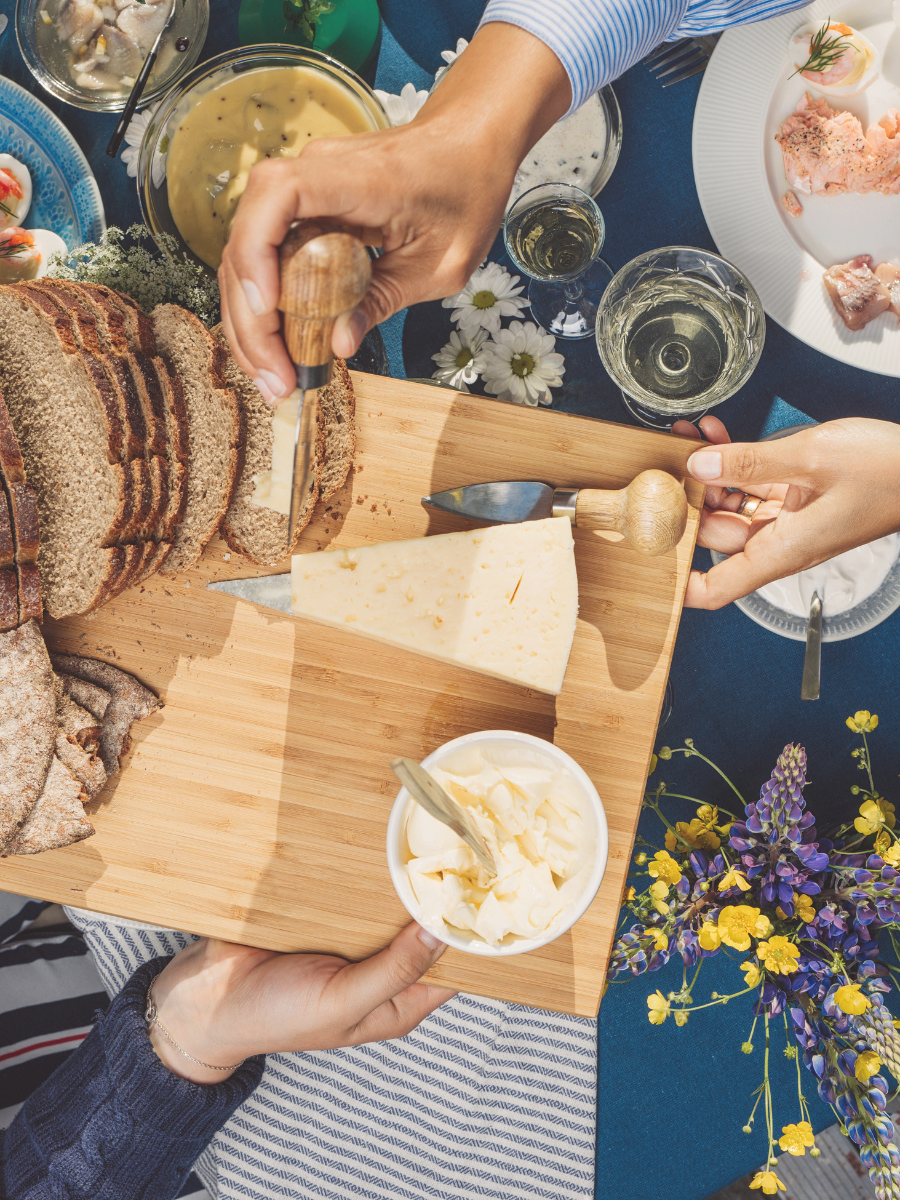Special Note: This is the third part of a 5-part series on Gut Health.
I’ve included the link for Part 1 and Part 2 below, and I suggest reading those posts first before jumping into Part 3.
Part 1: https://www.elainebrisebois.com/healyourgut-part1/
Part 2: https://www.elainebrisebois.com/healyourgut-part2/
Step #3: Reinoculate
Imagine a beautiful, lush garden growing in your backyard…or maybe on your balcony if you’re a city gal like me.
(Go with it for a second)
This garden is home to a diverse range of exotic plants and colorful flowers, all with a uniqueness of their own.
You planted the seeds and lovingly tended to its needs, paying special attention to ensure hospitable conditions for its nourishment and growth. As a result, you’ve watched it flourish to the beautiful garden it is today.
Now imagine a garden in your gut, but instead of plants and flowers, it’s made up of trillions of microbes containing at least 1000 different known species.
Welcome to your gut microbiome, also commonly referred to as your gut microflora.
It’s interesting to note that these bugs actually out number our cells 10 to 1, so it’s not unfair to say that we’re actually more microbe than we are human!
But before you get squeamish at the thought of trillions of bugs crawling around your insides, know that the majority of these microbes are actually harmless, and in fact, many benefit our health in a number of ways.
These healthy microbes are referred to as probiotics—which literally translates to “pro-life”.
Consider them the cheerleaders and support system of your gut, working on your behalf to crowd out pathogenic microorganisms and break down harmful toxins.
Health Benefits Include
- Enhancing our immune system and making us more resistant to infection (Note: improved immune system function can reduce symptoms related to food allergies, eczema, arthritis, and many other conditions)
- Assisting in digestion and better absorption of nutrients
- Synthesizing important vitamins such as some of the B Vitamins and Vitamin K (necessary for utilization of calcium and blood coagulation)
- Producing protective substances such as short-chain fatty acids that support colon health
- Helping to correct diarrhea and constipation associated with infection or certain gut disorders like Irritable Bowel Syndrome (IBS)
Another exciting and growing area of research is the effect of probiotics on our mental health. Our gut is home to our enteric nervous system, lovingly referred to as our “second brain”, and this includes our gut microbiome. There’s growing evidence that suggests our gut microbes actually talk to our brain through our hypothalamus-pituitary-adrenal (HPA) axis, a feedback loop that regulates mood, stress, digestion, immune function, and more.
Really though this is just the tip of the iceberg when it comes to the potential health effects of probiotics!
Modern Day Dilemma
Here’s the problem though. Most people living in this day and age don’t have a gut microbiome that’s flourishing with an ideal ratio of healthy microbes.
This is because our gut flora is extremely delicate and very easily disrupted by our environment, food choices, sugar, alcohol, medications (notably antibiotics and birth control pills), and stress.
Probiotics: Food and Supplementation
The two most common ways to introduce more probiotics to your gut is through diet and supplementation.
Eating foods that are naturally rich in probiotics is the easiest method. These include foods that are cultured or fermented and contain “live” or “active” bacteria. Many of these foods are ones that our ancestors regularly consumed, but over the years fell out of fashion in favor of quicker food preparation methods. With that said, many of these foods have made a comeback in recent years and are more readily available in the marketplace, so you don’t necessarily have to prepare them from scratch yourself.
Some of these foods include:
- Sauerkraut
- Kimchi
- Pickles
- Kvass
- Kombucha
- Miso
- Natto
- Kefir (plain, unsweetened)
- Yogurt (plain, unsweetened)
While these foods make a great addition to your diet, the best way to get a therapeutic amount of probiotics to your gut is through a good quality supplement—particularly if you’ve been ill, fighting an infection, and/or on antibiotics.
When it comes to purchasing a quality supplement it can be a bit overwhelming as there are many different types on the market.
Here’s a few pointers:
- Not all probiotics are created equal. Choose one from a trusted brand that uses clinically tested strains.
- Probiotics are classified by genus, species and strain. For example: Lactobacillus acidophilus La-14. In this case Lactobacillus is the genus, acidophilus is the species, and La-14 is the specific strain.
- The most common genera used in supplements are Lactobacillus and Bifidbacterium with each containing many different species and strains, although there are other genera. One notable mention is a probiotic called Saccharomyces Boulardii, a non-pathogenic yeast that exerts a probiotic effect in the body, and is clinically effective in the treatment of gastrointestinal orders such of antibiotic-associated diarrhea and traveller’s diarrhea.
- Not all species have the same health benefits, and will be dependent on individual strain.
- Potency is measured in CFUs, which stands for Colonizing Forming Units.
- Higher potency doesn’t always equate to better or more effective—more importantly are the individual strains being used.
- Are the strains resistant to stomach acid and bile? In other words, can they survive the journey down to the gut where they exert their beneficial effect?
As I mentioned, there are a lot of different formulas on the market. Some of them include many different strains, while others include just a few key ones. Some formulas are great for everyday health maintenance and some are actually formulated to prevent or treat specific conditions such as symptoms associated with IBS or traveller’s diarrhea.
And because each of our gut microbiomes is so unique, a supplement that works great for somebody else might not be the best one for you. You might find one product that serves you well for a while, and then switch to a different one to introduce other strains into your gut. I actually encourage experimenting with different products!
A Word on Prebiotics
Prebiotics are fermentable fibres that are essentially fuel for the healthy microbes in your gut, and help them flourish—kind of like the fertilizer you add to your garden to make it grow! Oftentimes they’re added to a probiotic formula in the form of fructooligosaccharides (FOS) or inulin. You’ll see them listed on the label.
You can also get prebiotics through your diet. Rich sources include raw foods such as garlic and onions, leeks, dandelion greens, Jerusalem artichokes, chicory root, and under-ripe bananas.
One word of caution. Some people with certain gut issues such as Irritable Bowel Syndrome (IBS) can actually find that prebiotics make their symptoms worse (i.e. gas, bloating). If this is the case for you, you might want to consider a supplement that is free from these added prebiotics, or work your way up slowly either through your diet or through supplementation.
Stay tuned for Part 4 and 5 coming next week!
Articles Referenced
http://onlinelibrary.wiley.com/doi/10.1111/j.1365-2672.2006.02963.x/full
http://www.johnshopkinshealthreview.com/issues/fall-winter-2015/articles/the-garden-in-your-gut

Hi! I’m Elaine, a Certified Nutritionist and Master Certified Health Coach. I support women in achieving their health and body goals while prioritizing a peaceful and balanced relationship with food.

Get a free copy of my handbook!
The Elegant Eating Handbook: Timeless Strategies for Lasting Weight Loss and a Peaceful Relationship with Food.
share with friends
keep reading...





[…] ← Previous […]
[…] Part 3: https://www.elainebrisebois.com/healyourgut-part3/ […]
[…] Part 3: https://www.elainebrisebois.com/healyourgut-part3/ […]